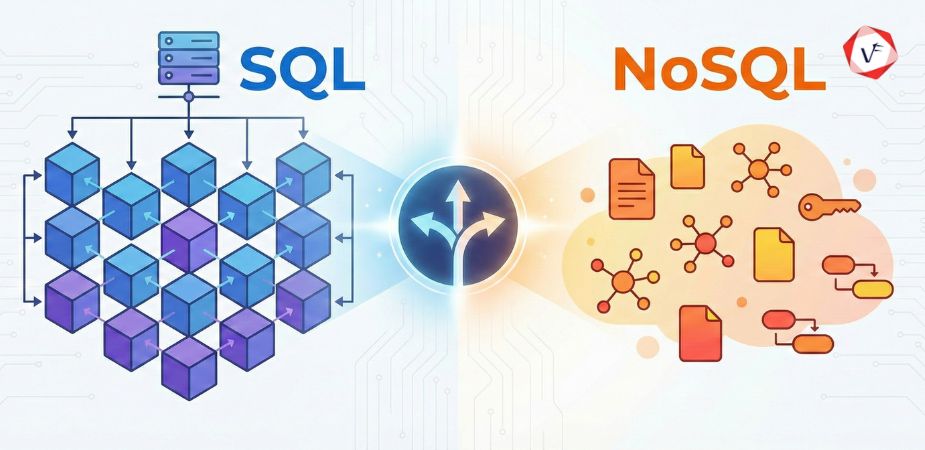
- June 27, 2025 7:10 pm
- by Safvana
Scrum vs Agile Development
- June 27, 2025 7:10 pm
- by Ajanth
Two terms that often come up are "Scrum" and "Agile”. In the software development, while they are related, they are not interchangeable. To understand their nuances, it's important to explore both concepts in-depth. This blog will delve into Scrum and Agile software development methodologies highlighting the key differences between them, how they work together, and why both are crucial for the success of modern development teams.
What is Agile Development?
Agile is a philosophy or mindset for software development that emphasizes flexibility, collaboration, and customer-centricity. It is based on principles outlined in the Agile Manifesto, which was introduced in 2001 by a group of software developers seeking a more adaptive and iterative approach to software development.
The Agile methodology focuses on delivering small, functional pieces of a project over time, allowing for frequent testing, feedback, and adjustments. This iterative process helps teams adapt to changing requirements and ensures that the product evolves based on real-world feedback rather than rigid, upfront planning.
The 12 principles of Agile include:
Customer satisfaction through continuous delivery of valuable software.
Welcoming changing requirements, even late in the development process.
Delivering working software frequently, with a preference for shorter timescales.
Collaboration between business stakeholders and developers.
Building projects around motivated individuals and providing the environment and support they need.
Face-to-face communication is the most effective method of conveying information.
Working software as the primary measure of progress.
Sustainable development with a constant pace.
Continuous attention to technical excellence and good design.
Simplicity in development.
Self-organizing teams that deliver the best architectures, requirements, and designs.
Regular reflection on how to become more effective, with adjustments to the team’s processes.
In essence, Agile development provides the overarching framework for delivering high-quality software, enabling teams to remain flexible and responsive to customer needs.
What is Scrum?
Scrum is one of the most widely used frameworks that follow Agile principles. It is a specific methodology that defines a set of roles, events, and artifacts that help teams organize and execute their work in an Agile way. Scrum was initially developed by Jeff Sutherland and Ken Schwaber in the early 1990s and has since become a widely adopted approach in software development and beyond.
Unlike Agile, which is more of a philosophy, Scrum is a structured process with defined roles and ceremonies. Scrum allows teams to manage complex work in small, manageable chunks called sprints (usually 2-4 weeks). The main objective of Scrum is to deliver a potentially shippable product increment at the end of each sprint.
Key elements of Scrum include:
Roles:
Product Owner: Represents the business and stakeholders. The Product Owner prioritizes the product backlog and ensures the team delivers value.
Scrum Master: Acts as a facilitator and coach, ensuring that the Scrum process is being followed. The Scrum Master removes any obstacles that may hinder the team's progress.
Development Team: A cross-functional group of professionals who work collaboratively to deliver the product increment.
Events:
Sprint Planning: A meeting where the team discusses the backlog items to be worked on in the upcoming sprint.
Daily Scrum (Stand-up): A brief daily meeting where team members share what they did yesterday, what they plan to do today, and any blockers they may be facing.
Sprint Review: At the end of the sprint, the team presents the completed product increment to the stakeholders.
Sprint Retrospective: A meeting where the team reflects on the sprint, identifying what went well and areas for improvement.
Artifacts:
Product Backlog: A prioritized list of features, enhancements, and bug fixes that need to be implemented in the product.
Sprint Backlog: A list of tasks the team commits to completing during a sprint.
Increment: The sum of all the product backlog items completed during the sprint, resulting in a potentially shippable product.
Key Differences Between Scrum and Agile Development
Scope:
Agile is a broad mindset or philosophy, while Scrum is a specific framework that implements Agile principles.
Agile can be applied in various ways across different teams and projects, while Scrum has a defined structure that must be adhered to.
Flexibility:
- Agile is about embracing change, which is applicable to all aspects of a project, from requirements to processes.
- Scrum has its own set of rules, and while it is flexible, it requires teams to follow a defined process.
Roles and Structure:
- Agile doesn’t prescribe specific roles or processes. The focus is on self-organizing teams and adaptive practices.
- Scrum, on the other hand, has clearly defined roles (Product Owner, Scrum Master, Development Team) and structured events (Sprint Planning, Stand-ups, Reviews, and Retrospectives).
Focus:
- Agile is more about mindset and continuous improvement in response to customer needs.
- Scrum is focused on delivering incremental improvements in a predictable, time-boxed manner (through sprints).
Implementation:
- Agile can be implemented in different ways, with various frameworks such as Kanban, Lean, and Crystal.
- Scrum is one of the many frameworks that adhere to Agile principles, but it is particularly structured in its implementation.
Process:
- Agile processes are flexible and often customized to the team's needs.
- Scrum follows a fixed set of ceremonies (sprints, reviews, etc.) that guide how the work is managed and executed.
How Scrum and Agile Work Together
Though Agile and Scrum have their differences, they are complementary and can work in tandem. Scrum provides a practical framework for teams to implement Agile principles. Here’s how:
- Agile is the philosophy; Scrum is the practice. Scrum translates the philosophy of Agile into actionable steps. It ensures that teams follow an iterative, incremental approach that aligns with Agile values.
- Agile fosters flexibility; Scrum ensures structure. Agile promotes adaptability and continuous improvement. Scrum provides a structured approach to achieve that flexibility by organizing the work into sprints and encouraging regular feedback.
- Customer collaboration is key: Both Agile and Scrum focus on collaborating closely with customers or stakeholders. The Scrum framework provides the mechanisms (like Sprint Reviews and regular communication with the Product Owner) to ensure that customer feedback is continuously integrated into the product development process.
- Continuous improvemen: Agile emphasizes the need for regular reflection and learning. Scrum enables this through retrospectives, where the team identifies opportunities for improvement after each sprint.
Why Scrum is Effective in an Agile Environment
Scrum is particularly effective in an Agile environment because it balances flexibility with structure. Agile’s core principles provide the freedom to adapt and change, while Scrum's fixed roles and processes offer a framework for organizing and executing that change effectively. Scrum helps teams deliver products iteratively, allowing for quick adjustments in response to customer feedback, while providing the predictability and structure necessary for large-scale projects.
Final Thoughts
In the world of software development, both Agile and Scrum are instrumental in creating high-quality products that meet the needs of customers. While Agile is a broad philosophy focused on flexibility and collaboration, Scrum provides the specific structure and process for implementing Agile principles. By working together, Scrum and Agile create an environment where teams can deliver value incrementally, adapt to changing requirements, and continuously improve their processes.
Ultimately, Scrum is not the only way to implement Agile, but it is one of the most widely adopted frameworks due to its structured yet flexible approach. Understanding both Scrum and Agile is essential for any modern software development team looking to thrive in a fast-paced, ever-changing industry.



